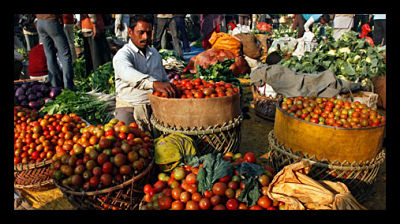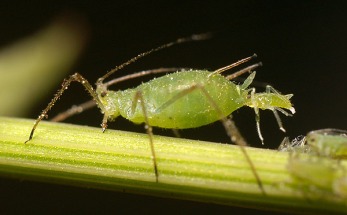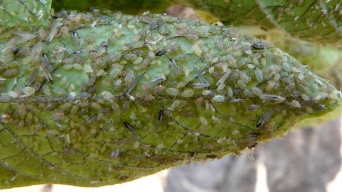The term agriculture is associated with the production of essential food crops. It is a fundamental part of almost all societies and plays critical role on boosting up the economy of society as well. Global population is increasing day by day and meeting the demand of increasing population is the major challenge human are facing now. Therefore, agricultural system must adapt or even transform in order to overcome the growing number of challenges and constraints.

After the Second World War the vast majority of the world’s countries became threatened of food shortage. World-wide food insecurity coupled with dramatic increment of world population led to Green Revolution. Norman Borlaug’s Green Revolution was the technological response to world-wide devastation. Green Revolution transformed farming practice in many region of the world with the introduction of high yielding varieties, new chemical fertilizers, synthetic herbicides and pesticides. As a result of Green Revolution the agricultural industry was able to produce much larger quantities of food. Furthermore, increase in productivity made it possible to feed the growing human population. Green Revolution ruled out for few decades. However, in spite of several benefits Green Revolution created some issues that affected both the environment and society. Overuse of chemical fertilizers dramatically influenced the environment as well as had remarkable impacts on soil fertility. Later on people realized that continuous environmental damage will undermine food security. Major transformations in agriculture during Green revolution served as an instant solution for meeting challenge of expanding food production but failed to ensure sustainable management of natural resources. Today, world needs a sustaining agricultural revolution- one major technological innovation that boost up the agricultural productivity through environmentally sustainable natural resource management and assure global food security. In addition, innovation must be able to ensure the reduction in pressure placed on the environment such as pollution, deforestation, overexploitation of natural resources, mining, land degradation, greenhouse gas emissions and threats to biodiversity which are the major reasons of climate change and climatic variability the world is facing currently.
To begin with, as defined by the United Nations’ Committee on world food security, food security is the condition in which all people, at all times, have physical, social and economic access to sufficient safe and nutritious food, that meets their dietary needs and food preferences for an active and healthy life. Alteration of human being has profound impact on food security. On the recent decades, we can realize the major global issues such as changing climate, growing global population, prohibitive food prices and so on are creating major hurdle on securing global food security. Besides that several policies and strategies are being launched targeted to mitigate ingrained problem from its root. Recently, one of the major steps taken by United Nation under the name of ‘Sustainable Development Goals’ integrate food security as one of the seventeen proposed goals under Goal number 2 as “End hunger”, aiming to achieve food security and improved nutrition, and promote sustainable agriculture”. Despite of UN efforts to eradicate hunger, latest data revealed unexpected increment on hunger. As per the recent survey world hunger is on the rise: the estimated number of undernourished people increased from 777 million in 2015 to 815 million in 2016, affecting 11 percent of the global population (FAO, SOFI 2017). The current world population of 7.3 billion is estimated to reach 9.7 billion by 2050 and 11.2 billion by 2100 (“world population forecast” Worldometers. Retrieved 26 June 2016). On the other hand, we need to increase food production by 60-70% by 2050 and even some of the developing countries have to double their production in order to feed currently growing population. Now, the strategy must be much more ambitious and effective in order to achieve food security along with addressing probable consequences.

Moreover, after the failure of enormous strategy to increase production, term sustainability is getting on limelight. Traditional farming practices were healthy but production used to be very low. Now, innovation should be such that production should be high while maintaining the quality of the environment and conserving natural resources. Smallholder farmers shares the major percentage of global food producers and they have the responsibility to increase their production exponentially to meet the mounting global population. So, it is vital that they are to be supported with technology (especially high quality inputs, including mechanization). That is why sustainable agricultural mechanization can be the promising solution for this problem. Sustainable mechanization considers technological, economic, social, environmental and cultural aspects when contributing to the sustainable development of food and agriculture.












 .
.
 Agriculture is the science, art, or occupation concerned with cultivating land raising crops and feeding, breeding and raising livestock farming. Sustainable development in agriculture is the method of adopting the farming practices so that it will be long lasting without creating any harmful effect in the environment. Hunger is the main issue in the world. It is important to develop a method which not only eradicate hunger but also fabricate the environment which can be sustainable. For the sustainability of agriculture, the main priority should be given to organic farming. At this present age, use of chemical fertilizers is increasing because of which sustainability of the land is declining. Eradication of such problem from the ground level is the requirement of the world. Insecticides, pesticides make the land useful for certain time. Even if more production can be made from the chemical fertilizers sustainability can’t be achieved. In coming days, the productive capacity of the land will be decreasing which can’t contrive the main goal of farming system. Many projects are running for solving the problems of agriculture from the world but still the world is suffering from hunger .Sustainability for the farming isn’t focused which is fabricating the problem of hunger for the present as well as future generation.
Agriculture is the science, art, or occupation concerned with cultivating land raising crops and feeding, breeding and raising livestock farming. Sustainable development in agriculture is the method of adopting the farming practices so that it will be long lasting without creating any harmful effect in the environment. Hunger is the main issue in the world. It is important to develop a method which not only eradicate hunger but also fabricate the environment which can be sustainable. For the sustainability of agriculture, the main priority should be given to organic farming. At this present age, use of chemical fertilizers is increasing because of which sustainability of the land is declining. Eradication of such problem from the ground level is the requirement of the world. Insecticides, pesticides make the land useful for certain time. Even if more production can be made from the chemical fertilizers sustainability can’t be achieved. In coming days, the productive capacity of the land will be decreasing which can’t contrive the main goal of farming system. Many projects are running for solving the problems of agriculture from the world but still the world is suffering from hunger .Sustainability for the farming isn’t focused which is fabricating the problem of hunger for the present as well as future generation.